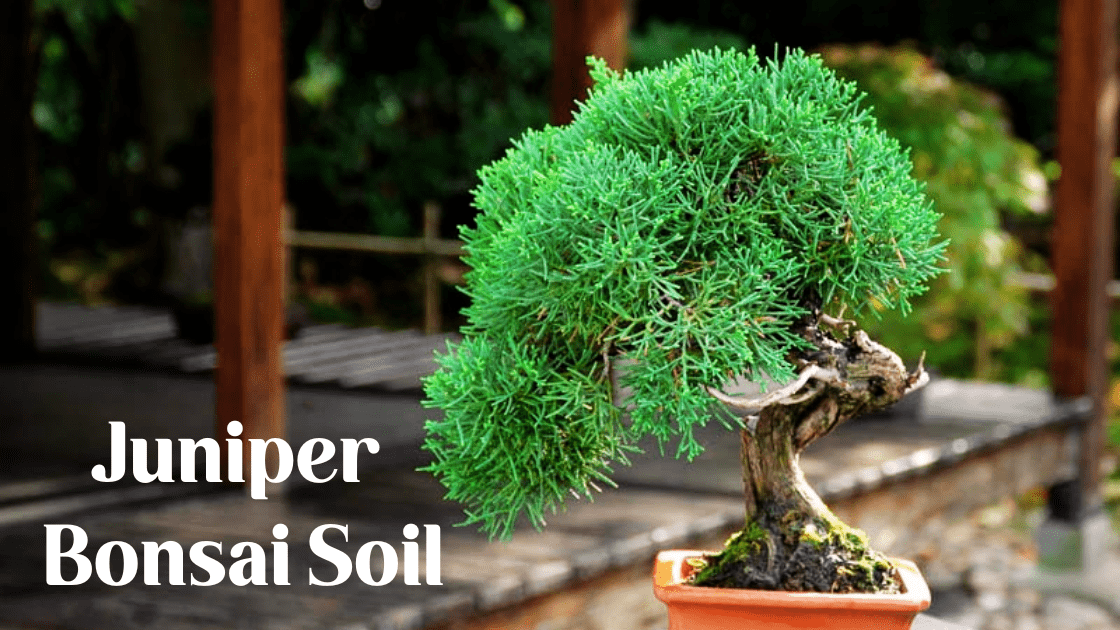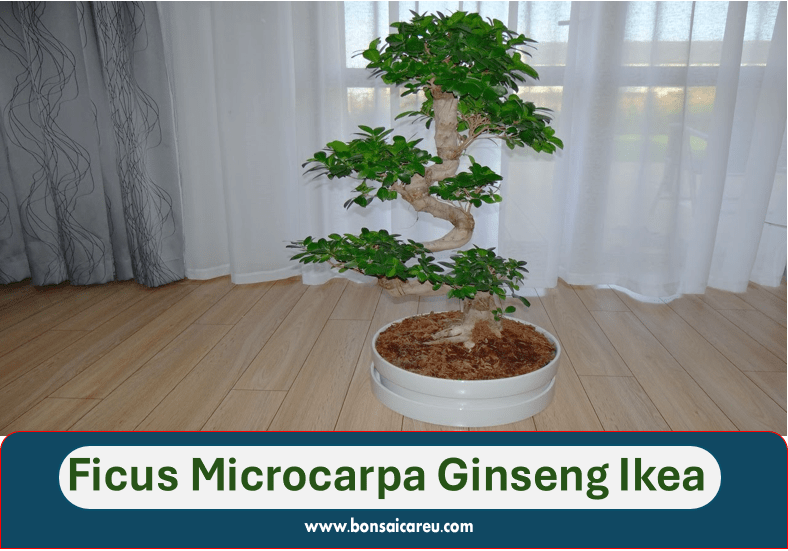Discover the Astonishing Power of Juniper Bonsai . Juniper bonsai soil should be well-draining and slightly acidic to support healthy growth. A mix of inorganic and organic materials, such as akadama, pumice, and pine bark, is essential to ensure proper aeration and moisture retention.
When creating the ideal soil mix for your juniper bonsai, consider the specific needs of the tree species, your local climate, and your watering habits. By providing the right soil environment, you can promote your juniper bonsai’s overall health and longevity.
Additionally, a well-balanced soil composition will aid in preventing common issues such as root rot and nutrient deficiencies.

Discover the Astonishing Power of Juniper Bonsai
Soil is crucial in cultivating bonsai trees, playing a vital role in the overall health and development of these miniature masterpieces. For juniper bonsai, the choice of soil becomes even more critical. In this article, we will delve into the significance of soil in bonsai cultivation, with a specific focus on juniper bonsai.
Role Of Soil In Plant Health
The soil in which a bonsai tree is planted directly impacts its health and growth. The right soil composition ensures proper drainage, aeration, and nutrient availability, essential for the tree’s overall well-being. It provides stability to the roots and helps maintain an optimal moisture level, preventing issues such as root rot.
When it comes to juniper bonsai, which thrives in well-drained soil, using the correct soil mixture is paramount. Junipers prefer soil that allows water to flow through easily, preventing waterlogged conditions that could lead to root suffocation. Additionally, the right soil composition for juniper bonsai helps maintain the necessary pH level for optimal nutrient absorption.
Specifics For Juniper Bonsai
Juniper bonsai trees require a well-draining soil mix that mimics their natural habitat. A suitable soil composition for juniper bonsai typically includes organic and inorganic components. Here is a breakdown of the specifics:
- Inorganic Components: Inorganic materials such as pumice, lava rock, or perlite are commonly used to enhance drainage and prevent compaction.
- Organic Components: Organic materials like peat moss or pine bark help retain moisture without causing waterlogging, providing a balanced environment for the roots.
- Bonsai Soil Mix Ratio: A recommended mix ratio for juniper bonsai soil is 70% inorganic and 30% organic components. This blend ensures the right balance between drainage and moisture retention.
It’s important to note that juniper bonsai soil should be free of any contaminants or chemicals that could harm the tree. A high-quality bonsai soil mix designed for junipers will help ensure the tree’s long-term health and vitality.
By understanding the significance of soil and tailoring it to the specific needs of juniper bonsai, enthusiasts can create an optimal environment for these beautiful miniature trees to flourish.
Components Of Ideal Juniper Bonsai Soil
Juniper Bonsai is popular among Bonsai enthusiasts due to its hardiness and adaptability. However, to ensure the longevity and health of your Juniper Bonsai, it’s crucial to use the right soil mix. The ideal soil for Juniper Bonsai should be well-draining, provide sufficient nutrients and water retention, and have the right pH balance. Here are the components of ideal Juniper Bonsai soil:
Organic Vs. Inorganic Materials
Organic materials such as peat moss, pine bark, and compost provide nutrients to the soil. Inorganic materials like pumice, perlite, and grit ensure good drainage and aeration. The best soil mix for Juniper Bonsai should balance both organic and inorganic materials to provide sufficient nutrients and good drainage.
Common Soil Mixtures
Here are some common soil mixtures that are suitable for Juniper Bonsai:
| Soil Mixture | Components |
|---|---|
| Standard Mix | 1 part peat moss, 1 part pine bark, and 1 part perlite |
| Akadama Mix | 1 part Akadama, 1 part pumice, and 1 part lava rock |
| Kanuma Mix | 1 part Kanuma soil, 1 part pumice, and 1 part lava rock |
It’s essential to note that the ideal soil mix for Juniper Bonsai may vary depending on the climate, humidity, and other factors. Therefore, it’s crucial to experiment with different soil mixtures to determine what works best for your Juniper Bonsai.
Physical Properties For Optimal Growth
The soil’s physical properties ensure healthy development when cultivating a Juniper Bonsai. The right soil composition promotes drainage and water retention, which is vital for the bonsai’s well-being.
Drainage Capabilities
Proper drainage is essential for preventing waterlogged soil, which can harm the Juniper Bonsai’s roots. The soil should be well-aerated and porous to allow excess water to flow freely.
Water Retention Balance
While drainage is crucial, the soil must retain sufficient moisture for the bonsai’s hydration needs. Striking a balance between drainage and water retention is key to sustaining the Juniper Bonsai’s health.
Preparing Your Own Bonsai Soil Mix
When preparing your bonsai soil mix, selecting the right ingredients and using the correct mixing techniques is crucial. This ensures that your Juniper bonsai thrives in a well-balanced and nutrient-rich environment. By understanding the components and proportions needed, you can create a custom soil mix tailored to the specific needs of your bonsai tree.
Best Blue Point Juniper Bonsai
Selecting The Right Ingredients
When selecting ingredients for your bonsai soil mix, it’s important to consider the specific requirements of Juniper bonsai. The ideal soil mix should provide adequate drainage, aeration, and moisture retention. Here are the essential ingredients to include:
- Well-draining soil components such as akadama, pumice, and lava rock
- Organic materials like pine bark or compost to improve moisture retention
- Granular materials for aeration and root development
Mixing Techniques
Once you have gathered the necessary ingredients, it’s time to master the mixing techniques to create an optimal bonsai soil mix. Follow these steps for an effective mixing process:
- Measure the ingredients in the appropriate ratios based on the specific needs of your Juniper bonsai.
- Thoroughly mix the components in a large container, ensuring an even distribution of each ingredient.
- Test the moisture retention and drainage of the soil mix to ensure it meets the requirements for Juniper bonsai cultivation.
Repotting Your Juniper Bonsai
Repotting is an essential part of caring for your Juniper Bonsai. It helps ensure the health and longevity of your tree by providing it with fresh soil and allowing its roots to grow and develop properly. In this section, we will guide you through the timing and frequency of repotting and the step-by-step process to repot your Juniper Bonsai.
Timing And Frequency
Knowing when to report your Juniper Bonsai is crucial for its overall well-being. Generally, it is recommended to repot your tree every two to three years, depending on its age and growth rate. However, there are a few factors to consider:
- The best time to repot your Juniper Bonsai is during its active growth phase, usually in early spring or late winter.
- If you notice roots growing out of the drainage holes or the soil becoming dense and compacted, it’s a clear sign that repotting is needed.
- Younger trees should be repotted more frequently as their root systems develop at a faster pace.
Step-by-step Repotting Process
Here is a step-by-step guide to help you successfully report your Juniper Bonsai:
- Select a new pot that is slightly larger than the current one. Ensure it has proper drainage holes to prevent waterlogging.
- Gently remove the tree from its current pot, carefully not damaging the roots or branches.
- Using a root hook or similar tool, carefully comb through the root ball to loosen the soil and remove any dead or tangled roots.
- Trim back long or excessively thick roots, focusing on maintaining a balanced root system.
- Prepare the new pot by adding a layer of fresh, well-draining bonsai soil at the bottom.
- Place the Juniper Bonsai in the new pot, ensuring it is centered and at the desired height.
- Fill the remaining space in the pot with the bonsai soil, gently working it around the roots to eliminate any air pockets.
- Water the tree thoroughly to settle the soil and provide hydration to the roots.
- Place the repotted Juniper Bonsai in a shaded area for a few weeks to allow it to recover from the stress of repotting.
Following these steps will help ensure that your Juniper Bonsai receives the proper care during the repotting process, promoting its health and growth. Remember to monitor your tree closely after repotting and adjust your watering schedule to support recovery.
Maintenance And Care Post-transplant
Ensure optimal health for your Juniper Bonsai by using well-draining soil post-transplant. Water sparingly and monitor moisture levels regularly to prevent root rot and maintain vibrant foliage. Proper soil care is crucial for the long-term well-being of your bonsai post-transplant.
Watering After Repotting
After repotting your juniper bonsai, it’s crucial to adjust your watering routine. Water the soil thoroughly but avoid overwatering. Check the soil moisture with your finger daily, and water only when the topsoil feels slightly dry.
Long-term Soil Management
Maintaining the right soil conditions for your juniper bonsai is essential for long-term health. Use a well-draining soil mix to prevent waterlogging and root rot. Consider repotting every two years to refresh the soil and ensure adequate nutrient availability. For the first month after repotting, avoid fertilizing your juniper bonsai to allow the roots to recover. After that, a balanced liquid fertilizer can be applied monthly during the growing season. Use a mixture of akadama, pumice, and lava rock for optimal drainage and aeration.
This blend promotes healthy root growth and reduces the risk of water-related issues. Regularly check the soil pH and adjust it if necessary. Juniper bonsai thrives in slightly acidic soil with a pH range of 5.5 to 6.5. Add peat moss or sulfur to lower the pH and limestone to raise it. In conclusion, proper watering and long-term soil management are crucial for your juniper bonsai post-transplant health. By following these guidelines, you can ensure that your bonsai thrives and remains healthy for years.
Frequently Asked Questions
Which Type Of Soil Is Best For Juniper Trees?
Well-draining sandy or loamy soil is best for juniper trees to thrive and grow healthily.
What Is The Best Soil For Bonsai Plants?
The best soil for bonsai plants is well-draining and airy, such as a mix of akadama, pumice, and lava rock. This combination provides good aeration and water retention, promoting healthy root growth and plant health.
What Do You Plant Juniper Bonsai In?
Juniper bonsai should be planted in well-draining soil that is specifically designed for bonsai cultivation. To ensure proper drainage, the soil should be a mix of organic matter, such as compost or peat moss, and inorganic matter, like coarse sand or perlite.
What Soil Do You Repot A Bonsai Tree?
When repotting a bonsai tree, use well-draining soil like akadama, pumice, and lava rock. This helps with aeration and water retention, promoting healthy root growth.
What Type Of Soil Is Best For A Juniper Bonsai?
Choose well-draining, gritty soil to prevent root rot and ensure optimal growth.
How Often Should I Water My Juniper Bonsai?
Water when the top inch of soil feels dry to the touch, typically every 2-3 days.
Conclusion
The type of soil used for a juniper bonsai is crucial for its growth and overall health. It is important to choose a soil mix that is well-draining and nutrient-rich. A blend of Akadama, pumice, and lava rock can be an excellent choice for juniper bonsai.
Additionally, regularly fertilizing and watering your bonsai can help it thrive. By providing proper care and using the right soil, your juniper bonsai can be a beautiful addition to your home or garden for many years.


